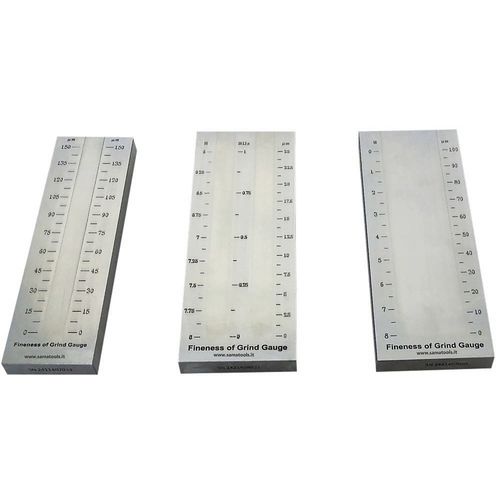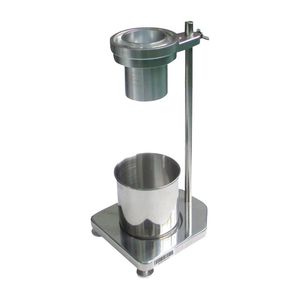
- Industrial machines and equipment
- Surface Treatment Equipment
- Grindometer
- S.A.M.A. ITALIA SRL

- Company
- Products
- Catalogs
- News & Trends
- Exhibitions
Grindometer SAGR
Add to favorites
Compare this product
Description
Fineness of grind gauges – SAGR
Many types of solid materials must be ground or milled into smaller particles for a correct dispersion in liquid. The physical properties of resulting dispersions, often called “grinds“, depend not only on actual size of individual particles, but also on the degree to which they are dispersed. The fineness gauge is used to indicate the fineness of grind, the presence of coarse particles or agglomerates in a dispersion. It does not determine particle size or particle size distribution. Grind gauges are used in production control, storage and application of dispersive products produced by milling in paint industry, plastic, pigments, printing ink, paper, ceramic, pharmaceutical, food and many others. The fineness gauge is a flat steel block whose upper surface supports one or two flat-bottomed grooves, varying uniformly in depth from zero to the maximum value of used scale. Groove depth is graduated on the block according to one or more scales used. The degree of dispersion is indicated in microns or “Hegman“. The Hegman scale ranges from 0 to 8 with numbers increasing as the particle size decreases. Tolerance is ±2 µm.
Catalogs
No catalogs are available for this product.
See all of S.A.M.A. ITALIA SRL‘s catalogsOther S.A.M.A. ITALIA SRL products
Original coating performances control
Related Searches
*Prices are pre-tax. They exclude delivery charges and customs duties and do not include additional charges for installation or activation options. Prices are indicative only and may vary by country, with changes to the cost of raw materials and exchange rates.











